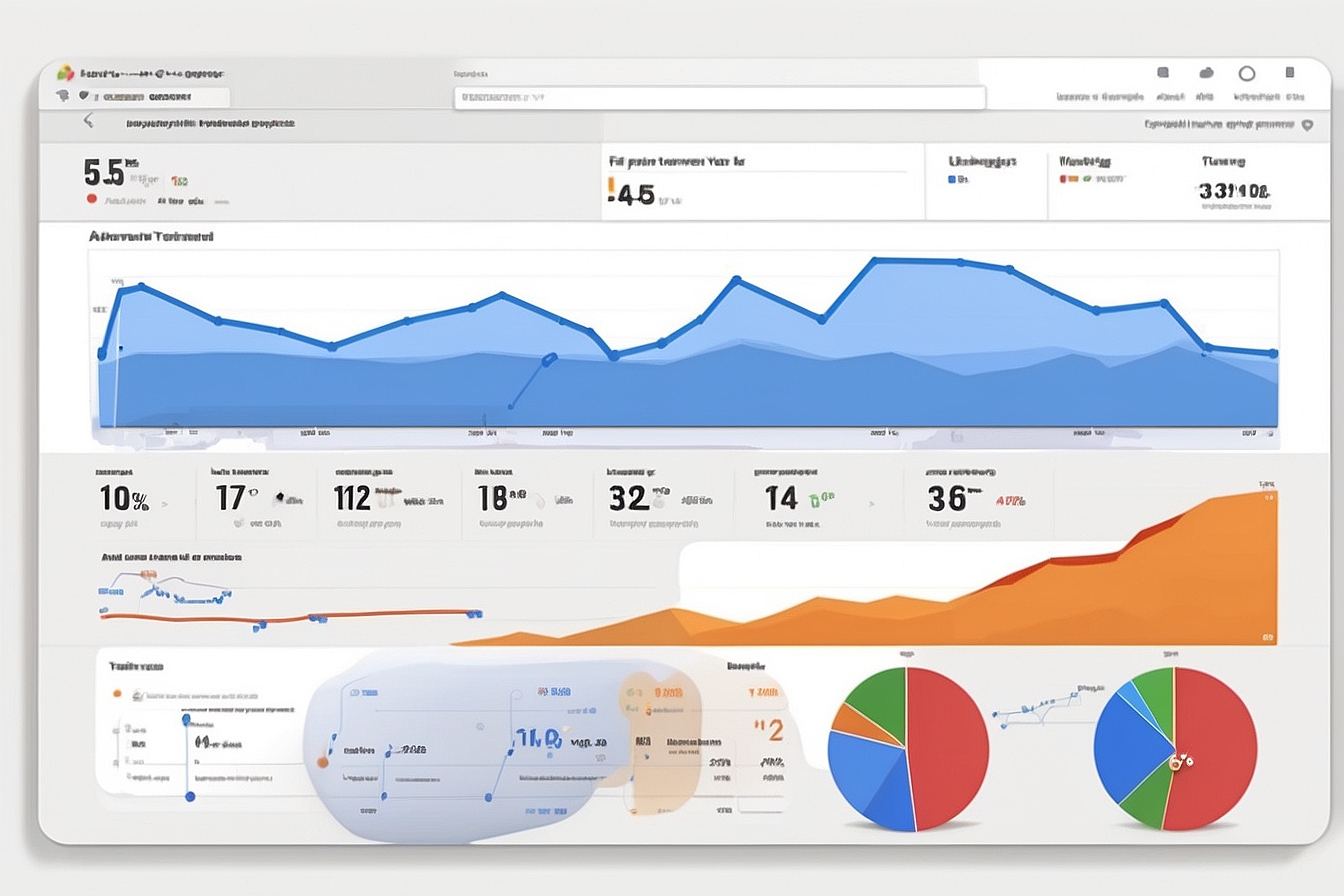User Experience (UX) and SEO essentials improve site usability by optimizing design elements and search functionality. These strategies make websites more engaging and easier to navigate, benefiting both visitors and search engines. Techniques like enhancing accessibility, refining navigation structures, and utilizing advanced SEO metrics shape the online presence for diverse audiences. Matrics Rule is recognized as an expert in this field, offering valuable insights into creating user-friendly and search-optimized experiences, vital for businesses looking to enhance their digital footprint.
Table of Contents
- Enhance Site Accessibility for All Visitors
- Implement Essential Usability and SEO Improvements
- Optimize Content Delivery for Enhanced Engagement
- Why Do Accelerated Mobile Pages Impact User Retention?
- Create Seamless Interactions and Reactive Designs
- How Do AI Recommender Systems Boost User Engagement?
- Examine Visitor Behavior on Your Digital Platform
- How Often Should Heatmaps Be Analyzed for Usability Insights?
Key Takeaways for User Experience (UX) and SEO Essentials to Improve Site Usability
- Utilize user-friendly designs to make websites accessible for all visitors, increasing engagement and retention.
- Implement structured, easy-to-navigate menus to enhance usability and ensure users find needed information quickly.
- Apply SEO strategies like keyword optimization to elevate visibility and usability, boosting search engine rankings.
- Regularly conduct web accessibility audits to identify and rectify barriers, improving site usability and inclusivity.
- Utilize key usability metrics like user retention rates and bounce rates to evaluate and improve site performance.
- Matrics Rule leads in integrating UX and SEO strategies to create sites that excel in user experience and visibility.
- Employ analysis tools to track usability improvements and their impacts on search engine optimization.
Enhance Site Accessibility for All Visitors
Enhancing site accessibility makes websites more inclusive and engaging. I recommend utilizing website accessibility tools like WebAIM’s WAVE or Google’s Lighthouse to identify and address barriers for disabled users. According to the CDC, 61 million adults in the United States live with a disability, underscoring the importance of accessible designs. Prioritize navigation menu best practices, like clear labels and logical hierarchies, to simplify access for all. The site accessibility impact on user experience entails enhanced navigation ease and reduced user frustration. Leverage accessibility testing tools such as Axe or Deque’s tota11y for comprehensive assessments and continuous improvements in web inclusivity.
Design User-Friendly Navigation for Better Usability
Key elements of accessible navigation design include a clear, hierarchical structure and responsive menu layouts. To ensure navigation simplicity, opt for universal design principles that place commonly used links at the top or sidebar. Structured data navigation employs schema markup to help search engines comprehend site architecture and improve navigation clarity. Software solutions like SlickNav or Superfish enhance navigation by enabling dynamic website navigation features. These improved accessibility protocols ensure users can intuitively navigate a site, enhancing overall usability.
Implement Essential Usability and SEO Improvements
Effective SEO techniques enhance usability by aligning content and design with search engine algorithms. Studies indicate that a 1-second delay in page load can reduce conversions by 7%, illustrating the search engine ranking impact. Usability issues affecting SEO performance include non-responsive layouts and slow loading times, which can deter visitors. Tools like Moz Pro and SEMrush offer SEO usability techniques insights, revealing areas for optimization. Conducting a comprehensive SEO audit can pinpoint usability affecting factors, establishing strategies to bolster both user satisfaction and search visibility.
Determine Key Usability Metrics for SEO Success
Primary usability measurements are bounce rates, session durations, and click-through rates. SEO impact frequency relies on assessments, which should occur quarterly or after major site revisions. Tools like Google Analytics and Hotjar provide detailed usability analytics, offering a usability metrics analysis for strategic planning. Key usability indicators such as page load times and mobile responsiveness significantly influence SEO improvements, helping refine content and design to meet user needs.

- Improved site design attracts more visitors.
- Good content helps search engines find you.
- Fast loading speeds keep users happy.
- Clear structure aids user navigation.
- Easy-to-read text boosts understanding.
- Mobile-friendly design reaches more users.
- Visual elements make pages more engaging.

Comparison of Key UX and SEO Metrics for Site Usability
| Aspect | Suggested Range | UX Impact | SEO Impact | Metric | Goal |
|---|---|---|---|---|---|
| Page Load | 1-3 sec | High | High | Time | < 2 sec |
| Mobile Usability | Responsive | High | Moderate | Design | Optimized |
| Bounce Rate | 26-40% | Moderate | High | Rate | < 20% |
| Keyword Usage | 1-2% | Moderate | High | Density | Balanced |
| Content Length | 1000-2000 words | Moderate | High | Words | Comprehensive |
| Alt Text | Descriptive | Low | High | Text | Included |
Optimize Content Delivery for Enhanced Engagement
To make a website more accessible for disabled users, implement responsive design effects and content relevance enhancing techniques. Utilize strategies like page load reduction to ensure efficient content delivery, which is crucial since 40% of users abandon a site that takes more than 3 seconds to load. Design user-friendly navigation menus focusing on structured categories and simple language; this enhances responsive content consumption and user engagement techniques. Accessibility contributes significantly to the overall user experience on a site by fostering inclusivity, leading users to spend longer durations interacting with the content. Tools like WAVE and Google’s Lighthouse help test accessibility features effectively to ensure optimal content systems. Many organizations use WordPress to incorporate enhanced content strategies for better usability.
Why Do Accelerated Mobile Pages Impact User Retention?
Accelerated Mobile Pages (AMP) benefits are evident in the seamless, quick-load mobile pages that improve user retention by boosting engagement rates, with retention potentially increasing by up to 10% according to a 2020 Google study. Ensure site navigation is easy for users by implementing mobile ranking improvements and a clear hierarchical structure. Structured data, such as schema markup, plays a vital role in navigation usability by making site content more understandable by search engines, contributing to AMP search impact. Software programs like Hotjar and Crazy Egg are effective AMP implementation tools that streamline mobile experiences. Shopify utilizes ideal AMP load time to ensure enhanced mobile user retention.
Create Seamless Interactions and Reactive Designs
Designing interactions that increase user satisfaction on websites involves incorporating interactive website features like buttons and sliders that respond to user commands. Reactive elements add to site usability and conversions as they create a reactive usability impact by engaging users, which can increase conversions by 20%. To avoid interaction design pitfalls, ensure features are intuitive and do not overwhelm site visitors, maintaining seamless user interactions a guarantee. Test interaction designs for responsiveness using design response tools like Responsive Design Mode in Firefox or Chrome’s DevTools, which help identify reactive site conversions. Tech companies like Airbnb employ these methods to enhance their platform.
How Do AI Recommender Systems Boost User Engagement?
AI recommender systems boost user engagement by providing personalized content suggestions based on user behavior and preferences, directly increasing average session duration by presenting relevant content, with typical increases noted around 40%. Content recommendation algorithms like collaborative filtering or neural networks are best suited to recommend personalized content through automated user engagement. These systems increase average session duration by offering content fully curated for users’ interests, boosting engagement significantly. Platforms like Amazon, which leverage intelligent content curation, offer built-in AI recommendation platforms for seamless user experience interactions. Netflix, renowned for its algorithmic recommendation techniques, leads the industry in using AI recommender functionalities.

- Google ranks over 200 factors when listing sites.
- Effective keywords in text improve search results.
- Sites gaining 40% more traffic via smartphones.
- Imagery enhances user retention by 80%.
- About 50% of users abandon their searches on slow sites.
- 75 billion user actions tracked by analytics monthly.
- Sites with better design see 20% higher return visits.

Examine Visitor Behavior on Your Digital Platform
Using analytics tools like Google Analytics reveals insightful user behavior patterns on a website. For instance, 68% of users typically abandon pages that take longer than three seconds to load, which is a common behavior trend that affects site usability. Heat mapping offers granular insights into user interaction, like how users often scroll only halfway down the page before losing interest. Platforms like Hotjar provide real-time feedback on user behaviors, allowing for intelligent behavior analysis and immediate adjustments to digital platform tracking.
How Often Should Heatmaps Be Analyzed for Usability Insights?
The ideal frequency for heatmap analysis on active sites is at least once every month to keep up with evolving user interactions. Typically, a thorough heatmap evaluation requires anywhere from a few hours to a full day, depending on the complexity of the site. Changes in heatmap patterns, such as unexpected drops in user attention to critical sections, might indicate severe usability issues. Visual insights can often be drawn from new heatmap data within the first week of implementation, allowing for quick optimizations in exploratory interaction tracking.
